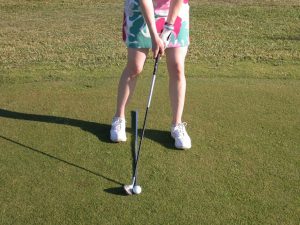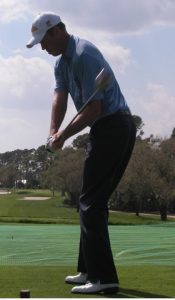Golf Concepts as a Teaching Basic

by Dr. T. J. Tomasi, Keiser University College of Golf Senior Faculty Member and Director of Research
It is not usual for golf pros to speak in a language populated with their own meanings, so full of golf phrases and idioms (P and I) that sometimes it might as well be a foreign language. This is the downside of misunderstanding, but if your teacher uses P and I correctly, it can be an effective learning tool. Below are some examples of golf language I use that amplify the concepts you need to play your best.
Don’t let the ball be your master: A warning about a mindset where the next set of swing mechanics is controlled by the last ball flight. When the ball is your master, it results in tinkering to get the ball to go straight. But when you are learning a fundamental such as grip, weight transfer, etc., you should ignore the ball flight because it is not an indication of your performance of the task. Of course, once your fundamentals are in place, the ball flight becomes very important – at this stage, the ball flight is a tutorial; it can point the way to fixing your swing. This next reminder is a mouthful every time the student becomes distracted by the ball flight, but once the phrase is established, it’s a valuable shortcut.
‘Your golf swing will never be any better than your concept of what a good swing is’ is a concept that appears to be a ridiculously long acronym (YGSWNBABTYCOWAGSI). Still, it really is so helpful in staying on track that all I have to do at key learning moments is say, “Remember, your golf swing will be no better…. well, you know the rest,” or hand them a post-it with the trigger YGSWNB… and they nod. It’s the most productive two seconds of the 60-minute lesson.
Once understood, humans learn very well using concepts, and this phrase is the gateway to learning golf. I put this acronym on the board of my Keiser University swing class first thing for a week and asked the students to repeat it every morning. By the third day, everybody could remember it – i.e., they had downloaded the concept for use in teaching others and in their own swing building. When they thought of golf, this concept was part of their mental landscape.
Other Triggers that Ignite the running of software:
Zero Out
When your club path and your clubface are both looking down the target line at impact, a condition exists that causes maximum backspin and a straight shot assuming center contact.
Five Club Faces at Impact
The Five Faces play a major role in producing ball flight.
They are at impact; 1] Square to the target line. 2] Open to the target line 3] Laidback toward the sky 4] Closed to the TL and 5] Hooded [see below for expansion]
Hooding the Club:
 An adjustment at address where the golfer moves the ball back in the stance and tilts the shaft forward to reduce the club’s loft. Hooding is enlisted to make the ball fly lower or to get more distance than normal from a club.
An adjustment at address where the golfer moves the ball back in the stance and tilts the shaft forward to reduce the club’s loft. Hooding is enlisted to make the ball fly lower or to get more distance than normal from a club.
The face is square, but the loft is decreased. Note the angle of the shaft as it leans toward the target.
So, with one concept (Five Faces), you can control ball flight.
Selective amnesia: When you play on the golf course, forget swing mechanics and hunt targets. The practice tee is where you work on your swing mechanics.
A healthy swing is one that hasn’t yet been videoed: To be a good learner, you must realize that variation from the model swing can work quite nicely once the fundamentals are in place. Idiosyncrasies are not necessarily errors. The concept is that video should be used judiciously, especially when learning the basics and how they fit together. Then video can be used for maintenance, but be careful because overuse of video becomes a teaching crutch deleterious to the learning process.
You can’t escape your shape: The non-negotiables of the swing change depending on the body type. The physics and biomechanical principles are the same, but their enactment varies, so the advice I give you in a lesson may not be the advice I give to someone else. Explain this to all students, including husband/wife pairs. Some advice is the same for all, while other advice depends on body type (strength, lever length, fast twitch vs. slow twitch, body frame, personality, etc.).



Three different body types, so while the basics are similar, the instruction is crafted with the body type included.
If you slow down a bad swing, you get a slow bad swing: Help your student find their natural swing tempo – this is a basic swing fundamental that varies in its expression from student to student.
Takeaway: There are many other core concepts, but the above gives the user a window on YGSWNB……
If you’d like to study with Dr. Tomasi and other PGA Master Professionals, contact The College of Golf today.














